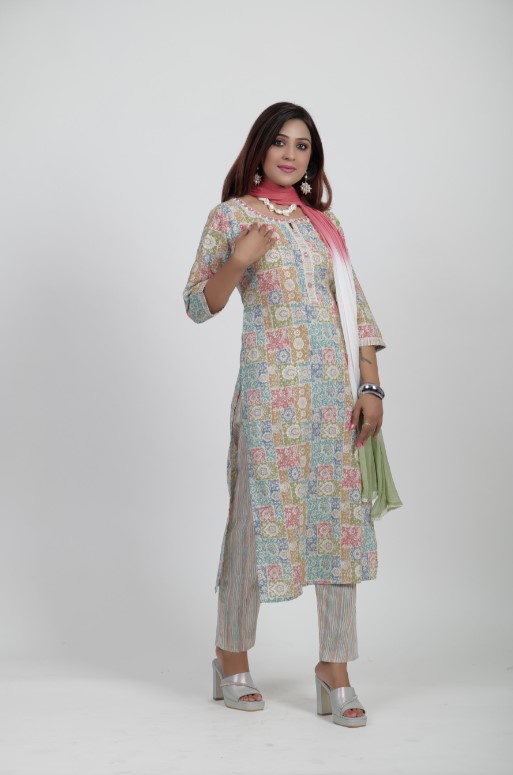The graceful salwar suit is one item of traditional Indian clothing that has unfailingly withstood the test of time. A unique place in every woman's wardrobe has been reserved for the salwar suit because of its comfort, adaptability, and rich cultural legacy. In this blog, we explore the fashions, history, and motivations for women's continued preference for salwar suits.
Background History:
The origins of the salwar suit for women can be found in India during the Mughal Empire, when it became fashionable among the nobility. The three main pieces of the ensemble are the salwar (pants), dupatta (scarf or stole), and kameez (top). Salwar suits have changed over time with the addition of fusion patterns, chic prints, and stylish styles.
Flexibility:
The adaptability of salwar suits is one of the main factors contributing to their popularity among women. Any situation can be easily tailored with a well-chosen salwar suit, be it a business meeting, a wedding, or a casual trip. Salwar suits come in a plethora of styles, ranging from basic cotton ones for everyday wear to ones with exquisite embroidery and embellishments for special occasions.
Comfort Level:
Given their reputation for ease, salwar suits are perfect for the climate in India. During the hot summer months, the breathable fibers of the loose-fitting salwar keep you cool while facilitating easy mobility. Additionally, women of various body shapes can find an appropriate fit thanks to the variety of styles available, including churidar, palazzo, anarkali, and straight-cut.
Regional Diversity:
The many salwar suit styles found in India's many regions are a stunning representation of the country's varied culture. In the northern states, people frequently go for the Punjabi suit because of its eye-catching hues and flowy Patiala salwar. On the other hand, the sophisticated Chanderi suits from Madhya Pradesh feature intricate handwoven patterns. Uttar Pradesh's royal Lucknowi outfits are renowned for their skilled chikankari stitching.
Evolution of Fashion:
Salwar suits, though a classic garment, have evolved to reflect shifting fashion tastes. To meet the changing interests of women, modern designers are experimenting with distinctive color schemes, cutting-edge cuts, and creative patterns. Fusion wear has become more and more popular, giving fashion-forward ladies even more alternatives by fusing parts of Indo-Western and Western styles.
In summary:
The salwar suit, a graceful and elegant ensemble has been a beloved and cherished piece of traditional Indian clothing for centuries. This iconic garment is crafted with exquisite attention to detail, and its beauty and allure never fail to captivate the wearer and onlookers alike. The salwar suit is a three-piece outfit that comprises a kameez, salwar, and dupatta. The kameez is a long tunic with a fitted bodice and a flowing skirt that drapes gracefully over the hips. It is often embellished with intricate embroidery, sequins, or beadwork, adding a touch of glamor and sophistication to the outfit. The salwar, a loose-fitting pant, is airy and comfortable, allowing for ease of movement. The dupatta, a long scarf, is a luxurious addition to the ensemble, draped elegantly over one shoulder or wrapped around the head.
Phone Number- 93190 90609
Email- Customercare@kiaasaretail.com


No comments yet